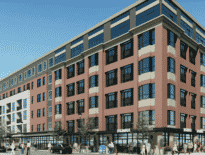America’s hiring boom of the past year has narrowed racial disparities in unemployment. Yet the Federal Reserve’s ongoing interest rate hikes – shaping up to be the steepest in 15 years – threaten to reverse that progress.
The Fed’s rate hikes will mean higher borrowing rates that could hobble the job market and undercut a goal the Fed unveiled two years ago: To keep rates ultra-low for as long as possible, to help less advantaged workers, who often don’t benefit much from job growth until late in an economic expansion.
Now, though, facing the worst inflation in four decades, the Fed has begun tightening credit and is expected to keep raising its benchmark short-term rate multiple times this year and next. Such rapid hikes, typically slow borrowing and spending and can raise unemployment and even cause a recession. During such downturns, Black and Hispanic Americans commonly suffer higher jobless rates.
The Fed’s shift away from low rates comes as the African American unemployment rate has reached 6.6 percent, down sharply from its pandemic high of nearly 17 percent and a relatively low level historically. Yet it remains twice the 3.3 percent rate for whites. Hispanic unemployment is 4.4 percent.
What’s The Data?
On Friday, the government will issue the March jobs report, which could shine further light on racial disparities. Economists estimate that employers added a healthy 478,000 jobs last month and that the unemployment rate dipped from 3.8 percent to 3.7 percent, according to data provider FactSet. That would be near the 3.5 percent rate just before the pandemic struck, which was the lowest level in a half-century.
In August 2020, the Fed redefined its goal of maximum employment as being “broad-based and inclusive.” For the first time, it would look beyond the overall unemployment rate and also consider jobless rates for Black and Hispanic workers in setting interest rates. Fed officials hoped that by keeping rates down, they could help narrow the nation’s persistent racial unemployment gaps.
The policy represented “a significant shift,” said Stephanie Aaronson, director of economic studies at the Brookings Institution and a former Fed economist. “Prior to that, every Fed chair would have said something along the lines of, a rising tide lifts all boats. Now they were saying, a rising tide lifts all boats – but not to the same level, and not at the same pace.”
For Chair Jerome Powell and other Fed officials, the goal was to keep the economy running “hot” to reduce unemployment as much as possible. The Fed also wanted to raise too-low inflation, which had stayed stubbornly below its 2 percent annual target for roughly a decade.
Some Alternatives
In a so-called hot economy, businesses become so desperate for workers that they hire applicants they would otherwise have neglected. They are more likely, for example, to hire and train workers who lack certain skills or even people who have completed prison sentences.
But the pandemic has upended the Fed’s intentions. The combination of supply-chain snarls and robust consumer demand, fueled by government rescue aid and the Fed’s own low rates, fed an unexpectedly large and persistent spike in inflation. The result is that the central bank must raise rates to fight inflation.
Powell and other Fed officials say they hope that by doing so, they will prolong, rather than derail, economic growth and further narrow racial inequities. Among those officials is Raphael Bostic, president of the Federal Reserve Bank of Atlanta, who said last week that he expected the economy to keep growing even in the face of higher rates.
With inflation chronically high, economists are in overwhelming agreement that the Fed has no choice but to tighten credit – perhaps aggressively – well into 2023.
“When inflation is not a problem, then it’s much easier to say, ‘We’re going to maximize employment and see how far we can take this,’ ” said Valerie Wilson, director of the Economic Policy Institute’s program on race, ethnicity and the economy. “But with inflation in the mix, they’re in a position now where they can’t really ignore that.”
A Waiting Game
Algernon Austin, who leads the race and economic justice program at the Center for Economic and Policy Research, suggested that while the central bank deserves credit for pursuing an inclusive recovery, “what the Fed does is not going to solve the problem.”
Likewise, Powell said last year that he believed Congress and other institutions would have to pursue policies, in education and other areas, to fully eliminate racial inequalities in jobs and incomes.
“We would all love to see no such gap,” he said. “I think eliminating inequality and racial discrimination … is really something that fiscal policy and other policies – frankly, education policies and that kind of thing – are better at focusing on.”
For now, Black Americans face higher unemployment than whites at every level of education, according to data compiled by the Economic Policy Institute. In 2019, Black workers with a four-year college degree had a higher jobless rate than whites with only some higher education did.







